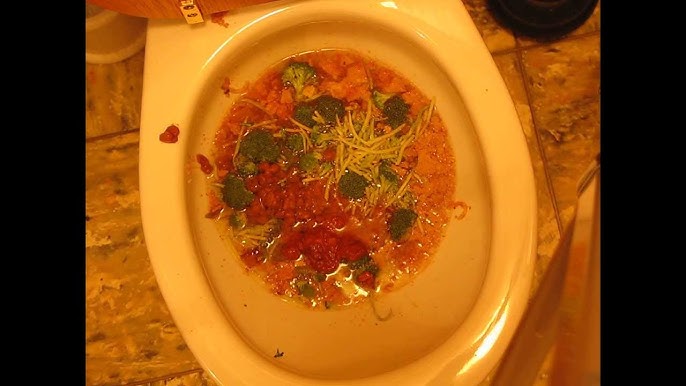They are making a few great points about Flushing Food Down the Toilet? in general in the article just below.

Introduction
Many individuals are usually faced with the issue of what to do with food waste, especially when it concerns leftovers or scraps. One usual inquiry that emerges is whether it's fine to flush food down the toilet. In this article, we'll explore the reasons people could consider purging food, the repercussions of doing so, and alternative approaches for appropriate disposal.
Reasons why people may think about purging food
Lack of awareness
Some individuals may not understand the potential harm triggered by flushing food down the bathroom. They may erroneously think that it's a safe technique.
Ease
Flushing food down the toilet might look like a quick and simple option to throwing away undesirable scraps, specifically when there's no neighboring garbage can offered.
Negligence
In some cases, individuals may merely select to flush food out of sheer negligence, without taking into consideration the consequences of their activities.
Effects of flushing food down the toilet
Ecological impact
Food waste that ends up in rivers can add to contamination and injury marine ecological communities. In addition, the water used to flush food can strain water resources.
Plumbing issues
Purging food can result in stopped up pipes and drains, triggering costly pipes repair work and troubles.
Sorts of food that must not be flushed
Fibrous foods
Foods with fibrous appearances such as celery or corn husks can get tangled in pipelines and cause obstructions.
Starchy foods
Starchy foods like pasta and rice can absorb water and swell, leading to blockages in pipelines.
Oils and fats
Greasy foods like bacon or food preparation oils must never be flushed down the commode as they can strengthen and trigger blockages.
Appropriate disposal methods for food waste
Making use of a garbage disposal
For homes geared up with waste disposal unit, food scraps can be ground up and flushed with the pipes system. Nevertheless, not all foods appropriate for disposal in this manner.
Recycling
Specific food product packaging materials can be recycled, minimizing waste and minimizing environmental impact.
Composting
Composting is an environment-friendly way to deal with food waste. Organic materials can be composted and utilized to enhance soil for gardening.
The value of appropriate waste administration
Decreasing ecological damage
Correct waste monitoring methods, such as composting and recycling, aid reduce pollution and maintain natural deposits for future generations.
Protecting plumbing systems
By avoiding the method of flushing food down the commode, home owners can stop pricey pipes repairs and maintain the integrity of their pipes systems.
Verdict
Finally, while it might be alluring to flush food down the bathroom for benefit, it is very important to recognize the prospective repercussions of this activity. By embracing proper waste monitoring practices and throwing away food waste properly, people can contribute to healthier pipes systems and a cleaner environment for all.
FLUSH FOOD DOWN THE TOILET?
FLUSHING FOOD CAN CAUSE BLOCKED DRAINS IN YOUR HOME
All of the plumbing fixtures in your home are connected to the same sewer pipe outside of your home. This outdoor sewer pipe is responsible for transporting all the wastewater from your home to the Council sewer mains. Even small pieces of food that go down the kitchen sink can cause problems for your sewer. It should therefore be obvious that flushing larger bits of food, such as meat, risks a clog in either the toilet itself or the sewer pipes. Flushing greasy food is even more problematic because oil coagulates when it cools, coating the interior lining of your pipes.
THE TOILET IS NOT A BIN
Food isn’t the only thing that people shouldn’t be flushing down the toilet. People use the toilet to dispose of all kinds of things such as tampons, makeup wipes, dental floss, kitty litter and even underwear. Water goes to great lengths to educate residents about the high costs and stress placed on wastewater treatment systems simply from people flushing the wrong stuff down the toilet. It costs taxpayers millions of dollars each year, and homeowners thousands in blocked drain repairs.
FLUSHING FOOD IS A WASTE OF WATER
Flushing food is a waste of our most precious resource - water. In June this year Level 1 water restrictions were introduced to protect water supply from drought conditions. Much of New South Wales continues to be affected by prolonged drought with recent figures revealing up to 97 per cent of the state remains in drought. Depending on whether you have a single or dual flush toilet, every single flush uses between five and 11 litres of water. In the current climate this is a huge amount of water to be wasting on flushing food that should be placed in the bin (or better yet, the compost).
https://www.jabplumbingsolutions.com.au/blog/can-you-flush-food-down-the-toilet

I'm certainly very eager about and I hope you enjoyed the entire page. Are you aware of another person who is enthusiastic about Is it safe to flush food (especially rice) down the toilet?? Do not hesitate to promote it. Thank you so much for going through it.
This Site